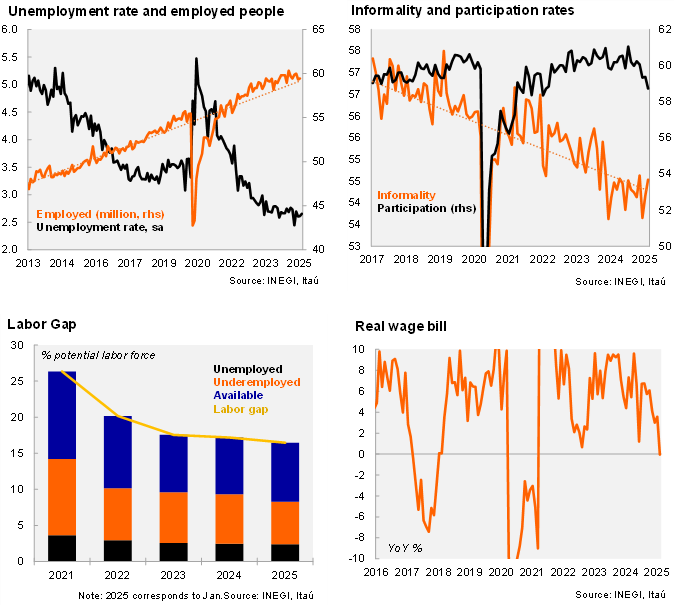According to INEGI, the unemployment rate stood at 2.51% in non-seasonally adjusted terms in February, close to our forecast of 2.47% and a bit lower than the Bloomberg’s market median of 2.6%. Using seasonally adjusted data, the unemployment rate was 2.65% in February, up from 2.61% in January and 2.58% a year ago. This increase is mainly attributed to a decrease in employment among people with fewer years of schooling and no work experience.
On a monthly basis, the number of employed people decreased by 277k in February, with a contraction of 346k in the formal sector and an increase of 69k in the informal sector. Consequently, the labor participation rate stood at 58.7%, slightly lower than January’s 59.4% and still below the pre-pandemic average for the same month, which was 59.5%. The year began with an increase in the informality rate to 54.5% from 54.2% in January, although it continues to fluctuate around a downward trend. Regarding wages, the wage bill in real terms remained unchanged due to a 5.5% YoY contraction in the number of employed people, despite higher real wages during the month (+5.8% YoY).
Our view: Looking ahead, we anticipate that job creation will continue to decelerate this year, driven by the expected slowdown in economic activity, with a technical recession during the first quarter of 2025 (we forecast -0.5% QoQ GDP 1Q25, after -0.6% in the previous quarter). We expect an increase for the unemployment rate to 2.9% on average this year, compared to 2.7% in 2024. Additionally, real wages are expected to remain on positive terms, partially supporting consumption for those employed. However, there are risks ahead due to uncertainty regarding trade policy, which could also affect the labor market.

